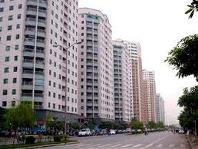Ha Noi builds property price index
Ha Noi builds property price index
The Ha Noi Construction Department has faced many challenges in building and developing the price and volume indices of the Ha Noi property market under the Ministry of Construction's Circular 20, the department's representative said at the conference on building the indices in Ha Noi on Thursday.
According to Circular 20, the ministry proposed a trial on building price and volume indices for the real estate markets of four large cities of Ha Noi, Da Nang, HCM City and Can Tho.
The indices would be an important statistics tools to keep watch on the property market and would help the State management offices, property investors and traders have reasonable development policies and strategies on the property market. Ha Noi was the first city to develop the indices.
Tran Hop Dung, head of the department's economic management division, said around 80 per cent of real estate transactions in the Ha Noi property market had not been implemented via property trading floors so the information collected from the trading floors did not reflect the general development of the Ha Noi property market.
Areas of Ha Noi had not had synchronous plans, nor technical and social infrastructures, Dung said. Ha Noi is a special city because it includes urban, mountainous and rural areas.
Therefore the Ha Noi Construction Department must choose the areas that have synchronous infrastructure to build the property price index for the market.
Dung said the municipal construction department proposed to build the volume and price indices for segment of apartments and independent houses on the property market of six districts of Dong Da, Cau Giay, Thanh Xuan, Ha Dong, Hoai Duc and Tu Liem by 2013.
Now almost all property transactions in Ha Noi were focused in the six districts, Dung said. Moreover, those districts had synchronous technical and social infrastructures.
Ngo Huong Giang, head of the research division of CB Richard Ellis Viet Nam Ltd Company, a foreign consulting property firm in Viet Nam, said only 20 per cent of property transactions had been implemented via property trading floors, so a collection of information from the remaining at 80 per cent of property transactions was a big challenge for companies valuing property products.
Additionally, business information from the trading floors must be accurate and have mechanisms for checking the information, she said.
vir























